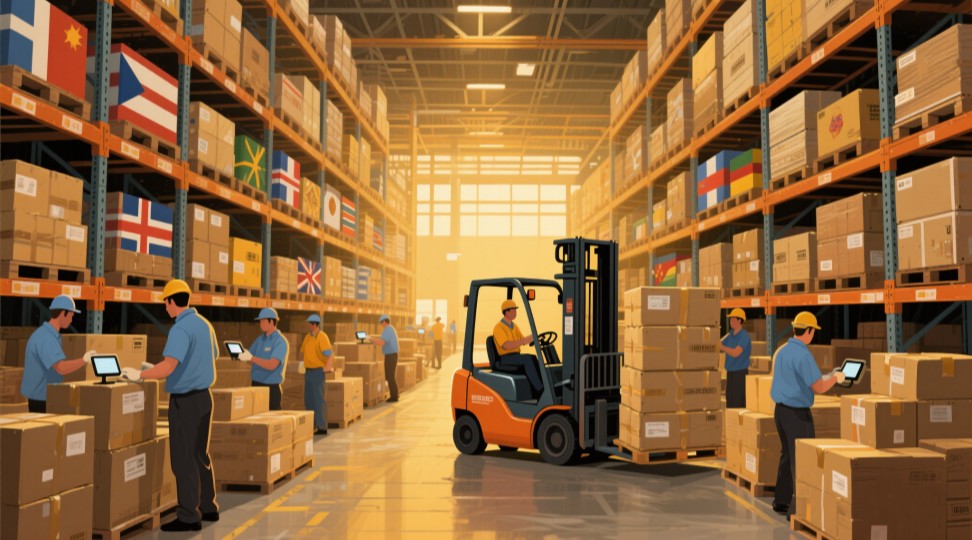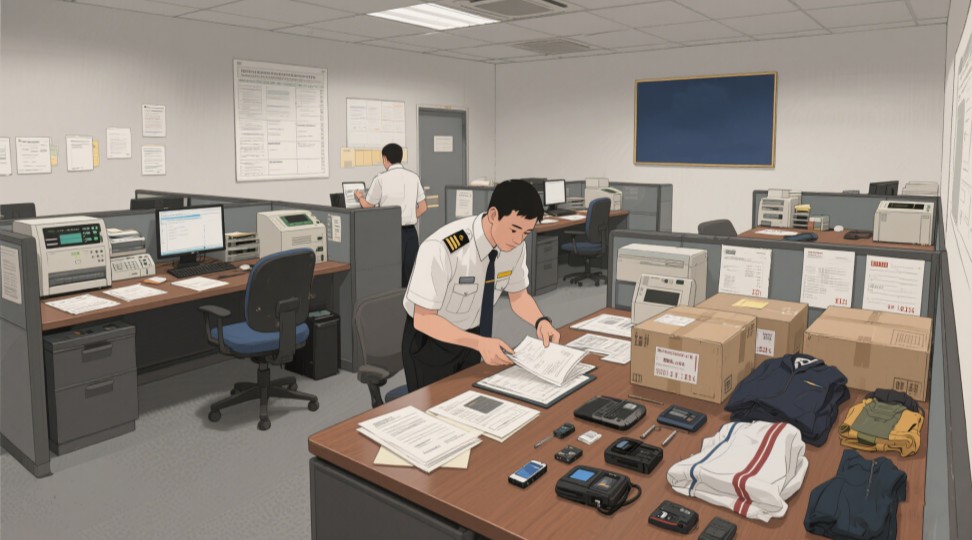تنتقل ملايين السلع، من الهواتف الذكية إلى المستلزمات الطبية، عبر الحدود يوميًا لتصل إلى الشركات والمستهلكين. تعتمد هذه الحركة العالمية على سلسلة اللوجستيات الدولية، التي تُنسّق عمليات النقل واللوائح والتكنولوجيا لتوصيل المنتجات بكفاءة. سواءً كنت تدير مشروعًا تجاريًا أو ترغب ببساطة في فهم التجارة العالمية، يشرح هذا الدليل الأساسيات والتحديات والابتكارات التي تُشكّل اللوجستيات الدولية اليوم.

ال سلسلة لوجستية دولية هي شبكة من الخطوات المترابطة المصممة لنقل البضائع من المنتجين إلى المستخدمين النهائيين حول العالم. تتضمن هذه العملية تخطيط مسارات النقل، وإدارة متطلبات الجمارك، وتحسين التخزين في المستودعات، وضمان التسليم في الوقت المحدد. على سبيل المثال، قد تجمع شحنة قطع غيار السيارات من ألمانيا إلى المكسيك بين النقل بالسكك الحديدية والنقل البحري والنقل بالشاحنات، حيث تتطلب كل مرحلة تنسيقًا دقيقًا لتجنب التأخير.
وتتضمن الأهداف الرئيسية تقليل التكاليف، وتقليل التأثير البيئي، والحفاظ على الشفافية للشركات والعملاء.
يعتمد اختيار وسيلة النقل المناسبة على الميزانية والإلحاح ونوع المنتج:
| وضع النقل | كفاءة التكلفة | وقت العبور النموذجي |
|---|---|---|
| الشحن البحري | عالي | 35-45 يومًا |
| الشحن الجوي | قليل | 3-7 أيام |
| شحن السكك الحديدية | معتدل | 30-35 يومًا |
| الشحن البري | معتدل | 7-12 يومًا |
يجب أن تتوافق كل شحنة دولية مع اللوائح المحلية. تتضمن الخطوات الأساسية ما يلي:
غالبًا ما تحدث التأخيرات بسبب عدم اكتمال المستندات أو سوء تصنيف البضائع. التعاون مع مقدمي خدمات ذوي خبرة مثل عزيزي هيئة النقل بالسكك الحديدية يضمن الامتثال ويقلل من الاضطرابات.

تعتمد إدارة سلسلة التوريد العالمية الحديثة على مستودعات موزعة استراتيجيًا ومجهزة بأنظمة أتمتة. على سبيل المثال، تُقلل المرافق القريبة من الموانئ الرئيسية (مثل شنغهاي أو هامبورغ) من أوقات النقل، بينما تتتبع أنظمة الجرد مستويات المخزون آنيًا لمنع أي نقص.
تُعزز أدوات مثل التتبع المُمكّن بإنترنت الأشياء وتوثيق البلوك تشين الرؤية والأمان. تراقب المستشعرات حالة الشحنات (مثل درجة حرارة الأدوية)، بينما تضمن البلوك تشين سجلات شحنات آمنة من العبث. منصات مثل عزيزي هيئة النقل بالسكك الحديدية دمج هذه التقنيات لتبسيط العمليات للعملاء.
تشمل العقبات الشائعة ما يلي:
الحلول:
الابتكارات التي تعزز الكفاءة:
تتيح هذه التطورات لمقدمي الخدمات مثل عزيزي هيئة النقل بالسكك الحديدية لتقديم خدمات شحن دولية موثوقة مع قدر أكبر من الدقة والشفافية.
سلسلة اللوجستيات الدولية نظامٌ معقدٌ وسهل الإدارة، مبنيٌّ على التعاون والتكنولوجيا والقدرة على التكيف. بفهم مكوناته، بدءًا من خيارات النقل ووصولًا إلى الامتثال الجمركي، يمكن للشركات تحسين عملياتها وتلبية توقعات عملائها بكفاءة.
للحصول على دعم مخصص في التنقل في الخدمات اللوجستية العالمية، استكشف عزيزي هيئة النقل بالسكك الحديديةخبرتنا تضمن التعامل مع شحناتك بدقة، من المصدر إلى الوجهة.
س1: كيف أختار بين الشحن البحري والجوي؟
الشحن البحري مناسب للشحنات الكبيرة غير العاجلة، أما الشحن الجوي فهو أفضل للسلع الحساسة للوقت.
س2: ما هي الوثائق المطلوبة للتخليص الجمركي؟
تتضمن المستندات الأساسية الفاتورة التجارية، ووثيقة الشحن، وشهادة المنشأ.
س3: هل يمكن لتكنولوجيا الخدمات اللوجستية أن تقلل التكاليف؟
نعم. تُخفّض أدوات مثل برامج تحسين المسارات وأنظمة الجمارك الآلية التكاليف.
س4: ما هي الخدمات اللوجستية الخضراء؟
ممارسات مثل استخدام الطاقة المتجددة في المستودعات أو تحسين طرق التسليم لتقليل الانبعاثات.
س5: لماذا الشراكة مع Dear Railway Transport؟
نحن نجمع بين الخبرة الصناعية والتكنولوجيا المتقدمة لتقديم خدمات فعالة وشفافة.